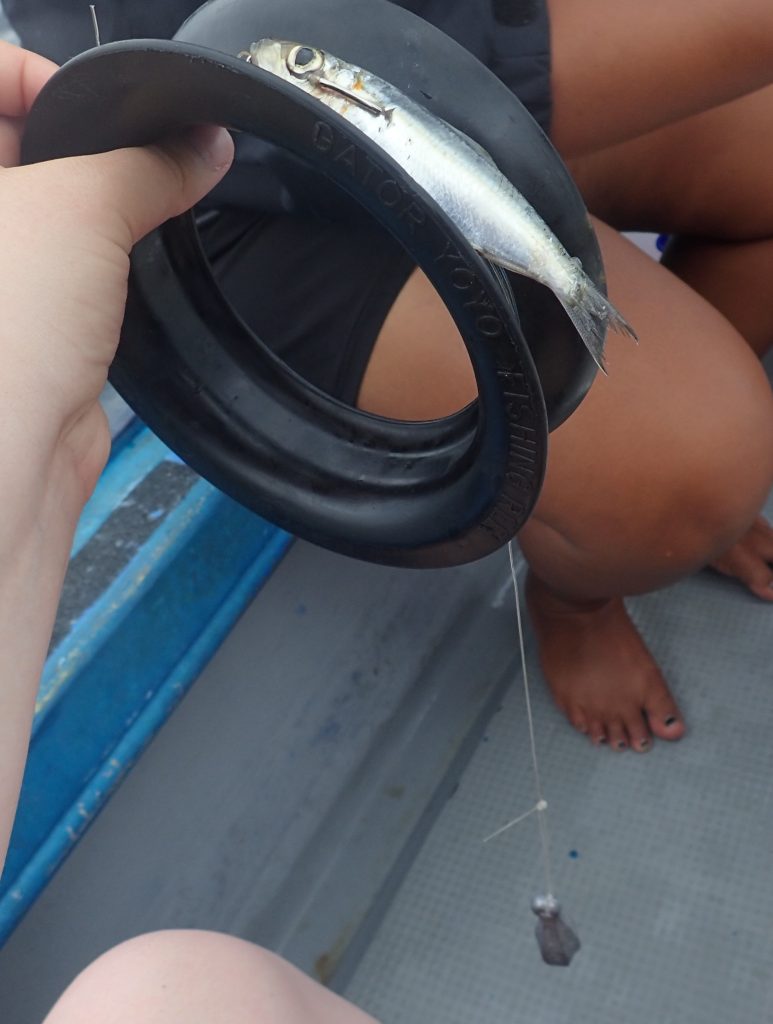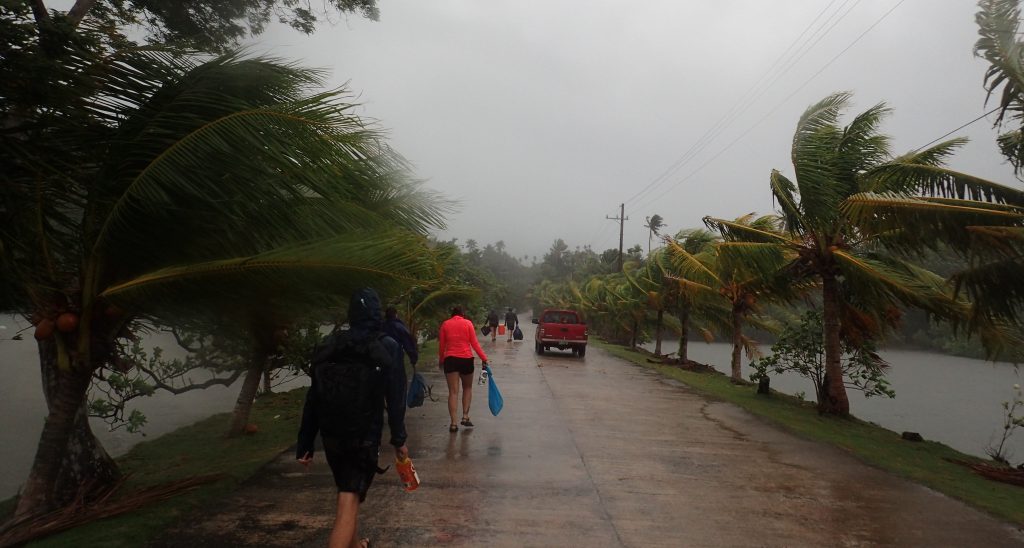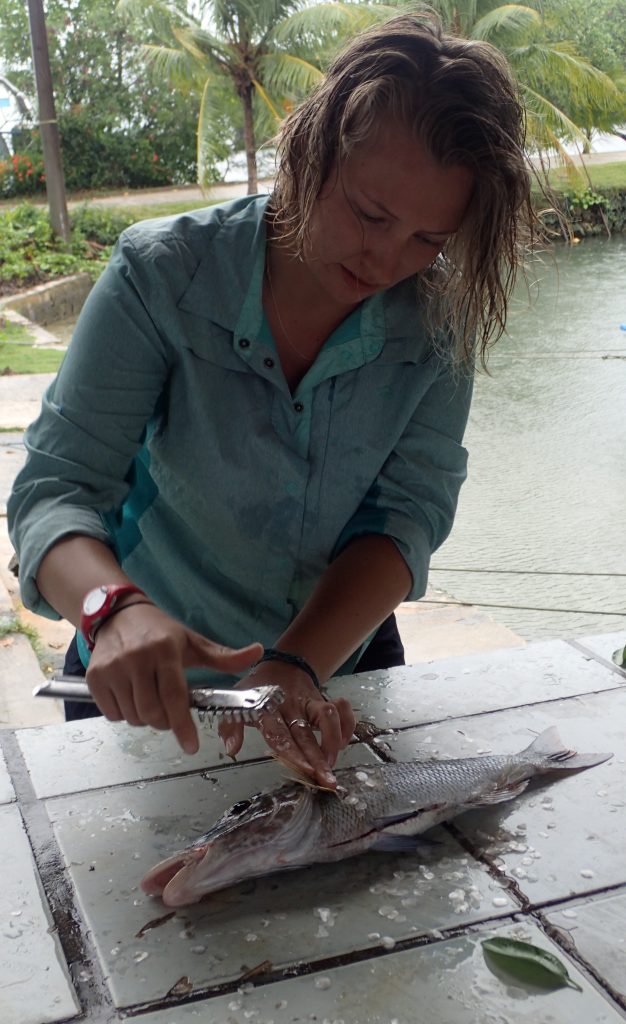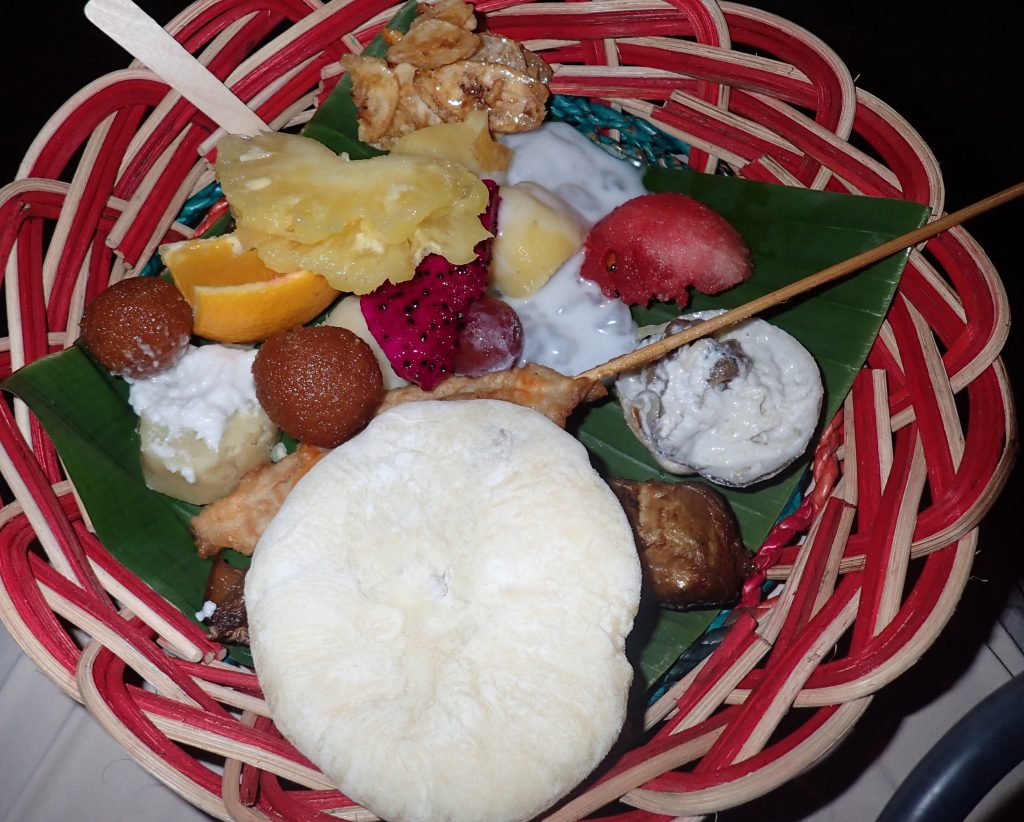
For our fifth day in Palau, we hopped on a boat and headed to the outside of Ebiil Channel. The group used bottom line fishing (a hook with bait attached to a line with weight, coiled around a spool, is dropped into the water until it reaches near the bottom).

With this tool, the group starting catching fish left and right! Tate, an OSU student, had a bite on the first drop of the day. The group caught 15 fish, but had to throw 3 back because of size limits and 2 groupers because they are not in season.

About an hour and a half in, rain started heavily pouring down. We quickly reeled in our hand lines and headed back to the Ollei port. The rain was so heavy that you could not see 10 feet in front of you, much less the islands that are supposed to guide fishermen back to port. The team did not lose motivation in the storm, however. Most of us were all smiles and singing songs.


After rounding up all the fish we had caught, Tino, captain of the boat, showed us how to measure each fish, differentiate between the males and females, and record the data.

Each student had a turn to scale the fish with fish scalers provided by the fishermen at the port. Starting at the tail, while holding the head, students remove the scales using the fish scaler to prepare it for eating.



After cleaning the fish, we sat down with the local fishermen elders (including Chief Rteruich Katsusi of Ollei) to discuss the issues the fishermen face today with the changes in tourism, culture, and everyday life.

In the evening, the Oregon State University students were invited to a celebration of the Todai (lighthouse) in the village of Ollei. The evening consisted of touring the remains of the lighthouse built by Palauans under control of the Japanese administration during World War II. The remains of the Todai showed bullet holes and had remnants of Japanese hand grenades within the foliage from when the Japanese fought the Americans during a battle.

We were then given a dinner of fish, clams, fruit (including dragonfruit), tapioca, and taro. The evening concluded when the local girls of Ollei performed a contemporary dance (the name for the traditional Palauan dance).

“Ng meral mle ungil a sils er kemam.” (Palauan for “We had a very good day!”)
Written by:
Simone Burton (Oregon State University, Marine biology major, Graduating Spring 2021)
Raimunt Mesubed (Palau High School and Pacific Academic Institute of Research (PAIR))

